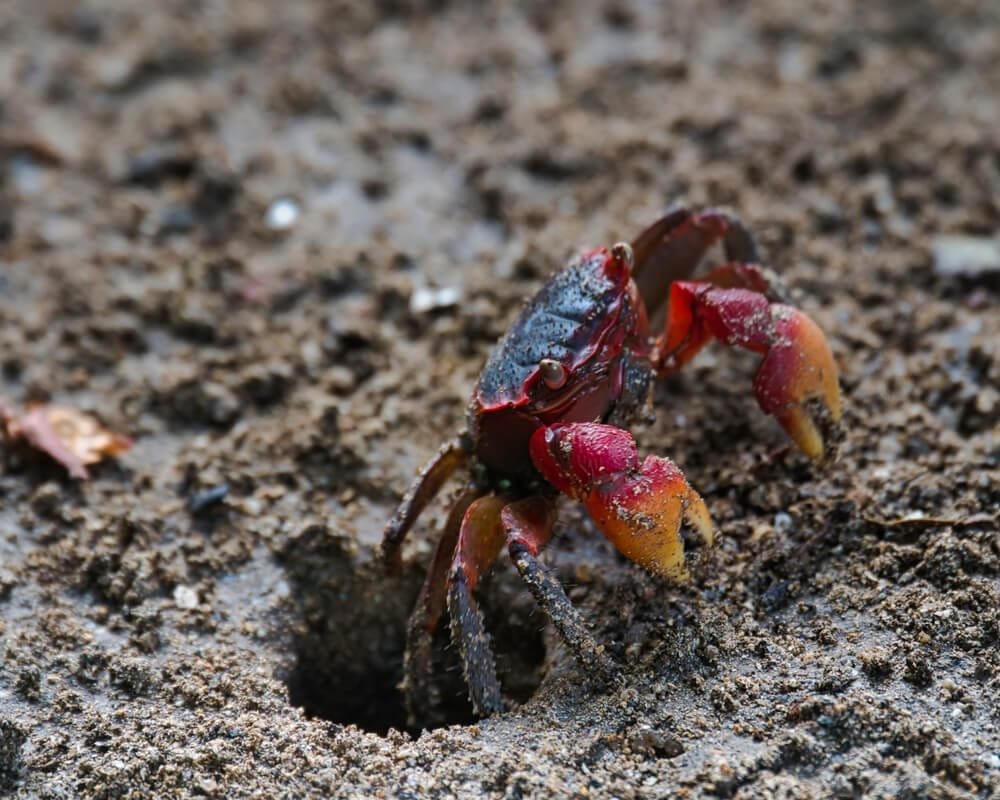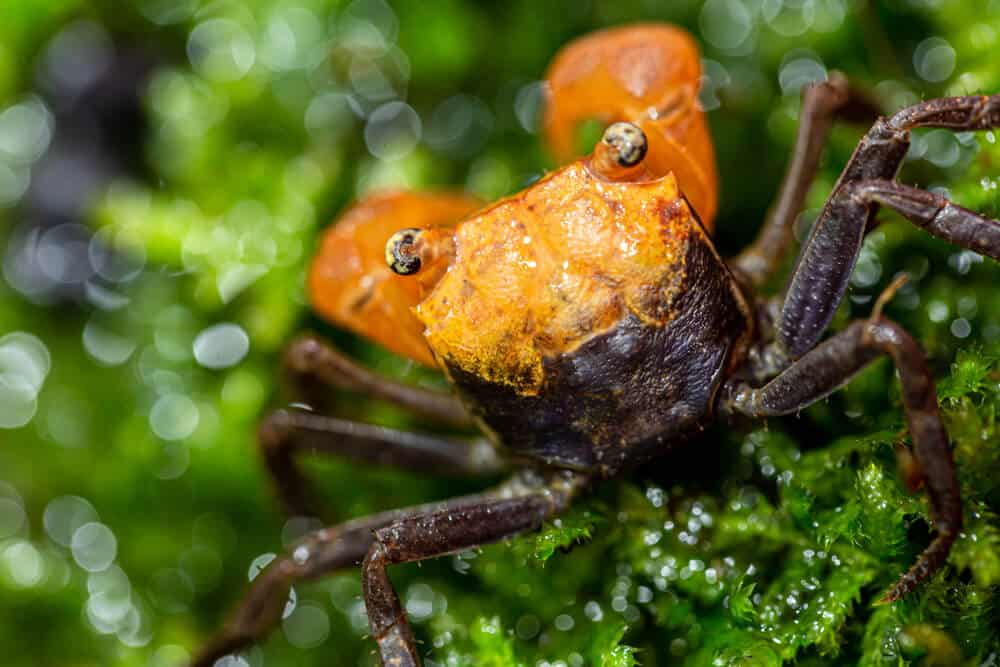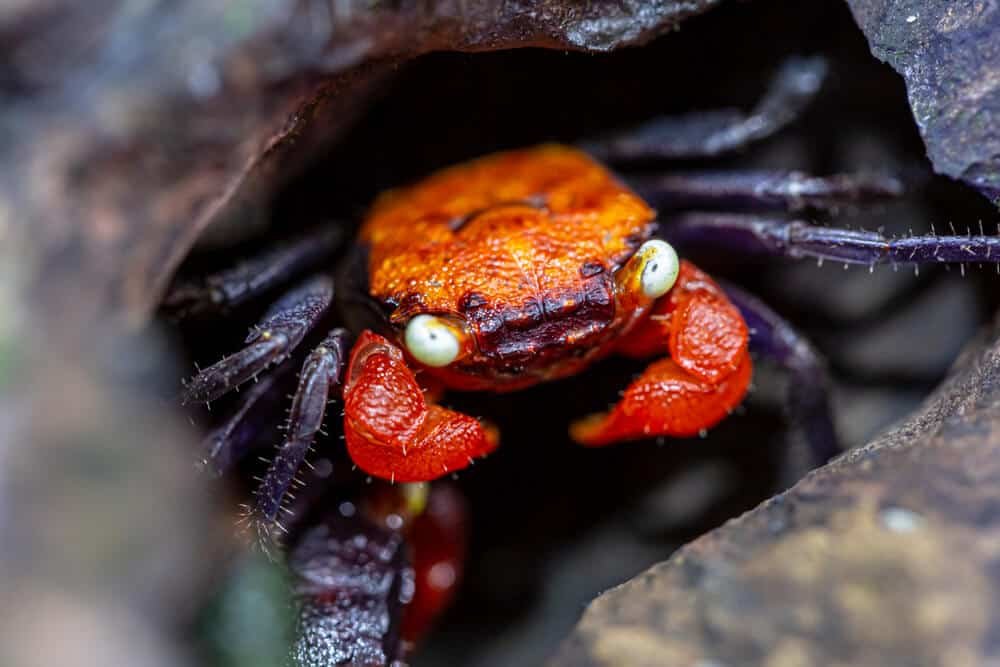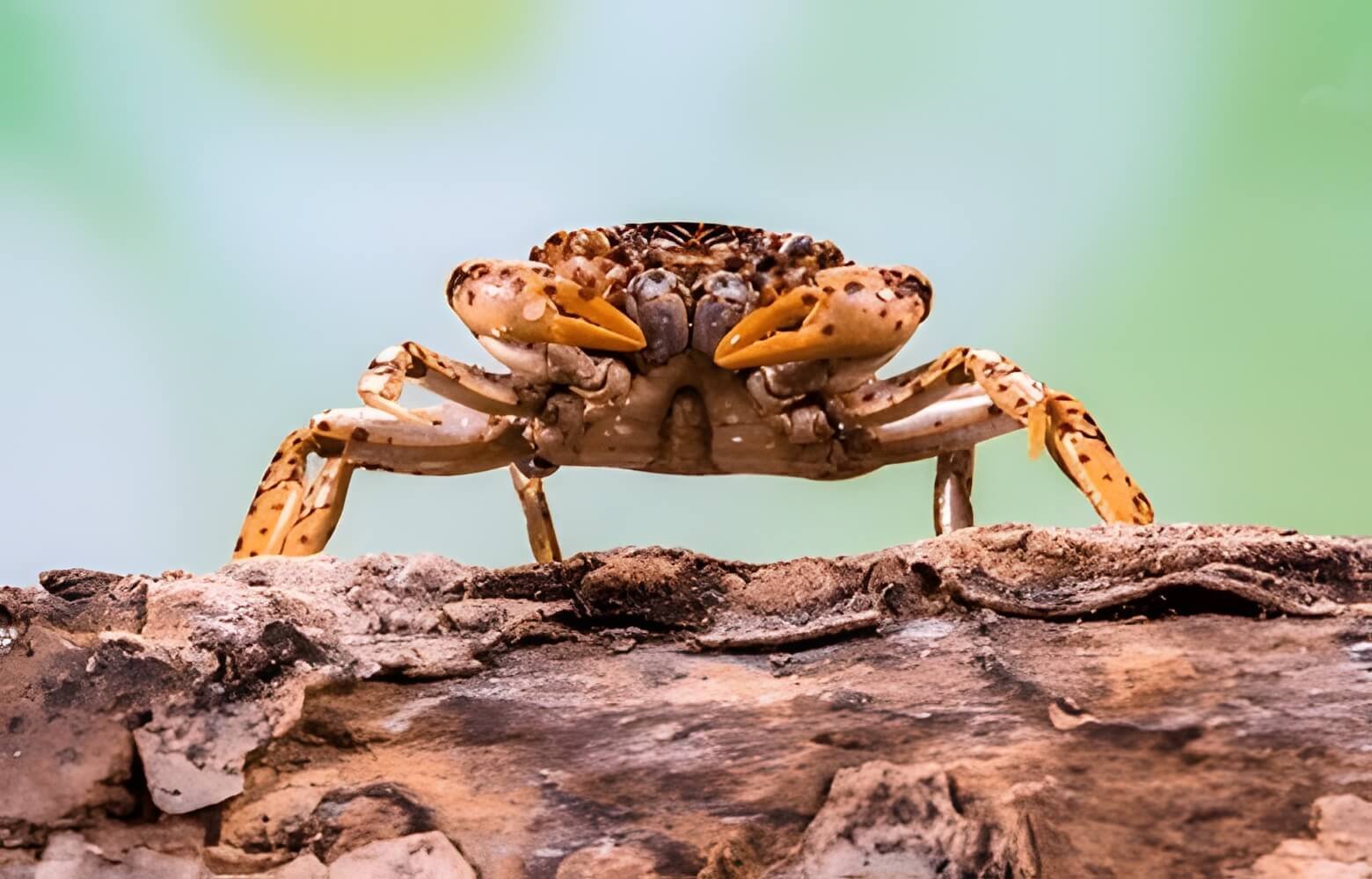Red Claw Crab: Habitat, Feeding and Tank Compatibility

Imagine a fascinating creature that boasts vibrant colors, unique adaptations, and a charming personality – that’s the Red Claw Crab. This captivating crustacean captivates with its distinctive red claws, hence its name. Found in the mangroves and swamps of Australia’s northern coast, the Red Claw Crab combines beauty and resilience to thrive in its aquatic home. With its captivating appearance and intriguing behaviors, this delightful creature is sure to leave you wanting to know more.
Physical Description
The Red Claw Crab is a fascinating creature that is sure to catch your eye. It reaches an impressive size, with the body measuring up to four inches in width. The legs, on the other hand, can reach lengths of up to six inches. With its large pincers and striking appearance, this crab truly stands out in any aquarium.
One of the most striking features of the Red Claw Crab is its color. As the name suggests, their claws are a vibrant red, which adds a pop of color to their overall appearance. The body is typically a mottled brown or green, allowing them to blend in with their natural habitat. Combined with their unique body structure, the Red Claw Crab is truly a sight to behold.
Speaking of body structure, the Red Claw Crab has a fairly compact build. It has a hard exoskeleton that protects its body and internal organs. The crab also has a pair of large pincers that it uses for various activities, such as capturing prey and defending itself. Its legs are long and flexible, allowing it to traverse various surfaces with ease. Overall, its body is well-adapted for its aquatic lifestyle.
Habitat and Distribution
Red Claw Crabs are primarily found in freshwater ecosystems. They are commonly spotted in rivers, streams, and lakes, preferring slow-moving or stagnant waters. It is important to note that they are not suitable for marine tanks, as they require specific conditions found in freshwater environments.
In terms of geographical distribution, Red Claw Crabs are native to parts of Southeast Asia, including countries like Thailand, Malaysia, and Indonesia. However, due to their increasing popularity in the aquarium trade, they can now be found in various parts of the world where they have been introduced. These include regions like North America, Europe, and Australia.
Life Cycle
Breeding
The breeding process of Red Claw Crabs begins with courtship rituals. Males will typically perform a series of displays to attract females, which may include waving their claws and performing a sort of dance. Once a suitable mate has been found, the male will transfer sperm packets, called spermatophores, to the female. Fertilization occurs internally, after which the female carries the eggs until they are ready to hatch.
Eggs and Development Stages
The eggs of Red Claw Crabs are carried by the female in a specialized brood pouch located on her underbelly. This pouch provides protection and ensures the eggs receive necessary nutrients. The incubation period can last anywhere from two weeks to two months, depending on factors such as temperature and water quality.
During this time, the eggs undergo development stages. Initially, they are small and translucent, but as they mature, they become more opaque. Eventually, the baby crabs, known as zoea, hatch from the eggs. These larvae are tiny and undergo several molting stages before fully developing into juveniles.
Maturity and Lifespan
Red Claw Crabs reach sexual maturity at around six to eight months of age. At this stage, they are ready to reproduce and continue the life cycle. In captivity, these crabs can live for around two to three years, although some individuals have been known to live longer with proper care. It is important to provide a suitable environment and diet to ensure a healthy and long life for your Red Claw Crab.
Behavior
Territoriality
Red Claw Crabs are known for their territorial behavior. They stake out their own areas, defending their chosen spot from other crabs and tankmates. It is essential to provide enough space for each crab to establish its territory to prevent aggression and stress. Ideally, each crab should have its own hiding spots and areas to explore within the tank.
Feeding Habits
The Red Claw Crab is an omnivorous species, meaning it consumes both plant and animal matter. In the wild, they feed on a variety of foods, including algae, small insects, crustaceans, and even small fish. In captivity, it is important to mimic their natural diet to ensure they receive proper nutrition.
Diet
Natural Diet
In their natural habitat, Red Claw Crabs primarily graze on algae and other plant matter. They also scavenge for small insects, worms, and crustaceans. These crabs have evolved to feed on a diverse range of foods, which is important to keep in mind when creating their diet in captivity.
Captive Diet
In captivity, Red Claw Crabs can be fed a combination of commercially available crab pellets or flakes, frozen or live foods such as bloodworms or brine shrimp, and a variety of fresh vegetables. It is vital to provide a well-balanced diet that includes both protein-rich foods and plant matter to ensure optimal health.
Tank Requirements
Tank Size and Setup
When it comes to tank size for Red Claw Crabs, bigger is always better. A minimum tank size of 20 gallons is recommended for a single crab, with additional space needed for multiple crabs. The tank should have a secure lid to prevent escape, as these crabs are exceptional climbers.
In terms of setup, it is essential to provide ample hiding spots and areas for exploration. Use a combination of rocks, driftwood, and live or artificial plants to create a natural-looking environment. Red Claw Crabs also require access to both land and water, so providing a sloping substrate that allows for a shallow water area and a dry land area is ideal.
Temperature and Water Parameters
Maintaining proper water parameters is crucial for the health and well-being of Red Claw Crabs. The water temperature should be kept between 75°F and 82°F (24°C to 28°C) to replicate their natural habitat. A heater and thermometer should be used to ensure a stable and suitable temperature.
Water quality is also important. Red Claw Crabs prefer slightly acidic to neutral water conditions, with a pH range of 6.5 to 7.5. Additionally, a filtration system should be in place to maintain clean and well-oxygenated water. Regular water testing and partial water changes are essential to keep the tank environment optimal for your crabs.
Substrate and Decorations
Choosing the right substrate is crucial for the well-being of Red Claw Crabs. A combination of sand and small rocks is recommended to mimic their natural habitat and provide a suitable surface for digging and burrowing. Avoid using sharp or jagged substrates that could potentially harm the delicate exoskeleton of the crabs.
As mentioned earlier, providing hiding spots and decorations is necessary to create a stimulating environment for your Red Claw Crabs. Incorporate rocks, driftwood, and live or artificial plants to offer them places to explore and retreat to when they feel the need. This will help reduce stress and encourage natural behaviors.
Compatibility
Choosing Tankmates
When choosing tankmates for Red Claw Crabs, it is important to consider their territorial nature. They are best kept in species-specific tanks or with peaceful fish species that are too large to be considered prey. Avoid keeping them with aggressive or fin-nipping fish, as this can lead to stress and potential injury.
Avoiding Aggression
To reduce aggression among multiple Red Claw Crabs, provide ample hiding spots and territories for each crab. It is also essential to provide enough space in the tank. If signs of aggression or fighting occur, it may be necessary to separate the crabs into individual tanks to ensure their well-being.
Common Diseases
Shell Damage
One common issue that can arise in Red Claw Crabs is shell damage. This can occur due to aggressive interactions, improper molting, or poor water conditions. It is important to monitor the overall health and condition of their exoskeleton. Providing a calcium-rich diet and proper water parameters can help prevent shell issues.
Fungal and Bacterial Infections
Red Claw Crabs are also susceptible to fungal and bacterial infections, usually caused by poor water quality or trauma. Signs of infection include white or discolored patches on the shell or body, loss of appetite, and lethargy. Prompt intervention, such as providing appropriate medication or water treatment, is necessary to prevent the spread of infection.
Caring for Red Claw Crabs
Feeding
To ensure the health and well-being of your Red Claw Crab, provide a varied diet. Feed them a combination of commercially available crab pellets or flakes, fresh vegetables, and occasional live or frozen foods. It is important to remove any uneaten food from the tank to maintain water quality.
Tank Maintenance
Regular tank maintenance is crucial for the overall health of Red Claw Crabs. Conduct partial water changes on a weekly basis, ensuring that the water parameters remain stable and suitable for your crabs. Regularly clean the tank equipment, such as the filter, heater, and decorations, to prevent the buildup of harmful bacteria.
Handling and Safety
While Red Claw Crabs may be fascinating to observe, they are not suitable for handling. Their sharp pincers can cause injuries, and they may become stressed or agitated when handled. It is best to appreciate them from a distance and focus on providing a suitable environment for their well-being.
Legalities
Regulations and Restrictions
Before acquiring a Red Claw Crab, it is crucial to research and understand the regulations and restrictions regarding their ownership in your area. Some countries or regions may have specific laws in place to protect native wildlife or prevent the introduction of invasive species. Ensure that you are legally allowed to keep Red Claw Crabs as pets before bringing them into your home.
Preventing the Spread of Invasive Species
Due to their ability to adapt and colonize new environments, Red Claw Crabs have been classified as an invasive species in certain areas. It is important to prevent their accidental release into the wild, as they can disrupt local ecosystems and harm native species. Proper disposal of aquarium water or any plants or animals from the tank is essential to ensure they do not become a threat to the environment.


